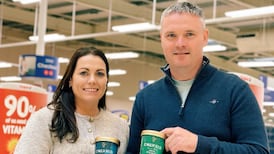As the Irish dairy industry begins to recover from a disastrous winter and the ensuing fodder crisis, farmers remain confident in a future that holds the first opportunity for growth in a generation.
A new survey shows most people expect overall industry improvements in the next five years and, in particular, are confident in their ability to augment conditions on their own farms.
With the pending removal of milk quotas in 2015, detailed research by AIB paints a picture of an industry eager to get on with things.
“This positivity may reflect the fact that farmers believe the situation must improve following the weather-related pressures in 2012 and early 2013,” says the Outlook report.
“Nonetheless, it is encouraging to see that the fodder crisis has not severely dented enthusiasm.”
Agri-food sector exports from Ireland reached €9 billion in 2012 with dairy accounting for almost 30 per cent, and milk alone constituting 25 per cent of gross agricultural output. The Irish dairy sector produces 5.2 billion litres of milk a year from 18,000 farmers.
Of the 200 farmers interviewed for the survey – carried out by Broadmore Research and Amárach Research – almost six in 10 expect to see improvements within the next five years.
And while the weather is viewed as the major potential threat over that time span, almost half (48 per cent) of those surveyed intend to invest in their business in the next three.
Writing in the report, IFA president John Bryan and National Dairy Committee chairman Kevin Kiersey share an optimistic view.
“The Irish dairy sector is poised for its first opportunity for real growth and development in over a generation,” they say.
“IFA has calculated that the potential rewards for the industry, for farmers and for the economy as a whole, are huge: 9,500 additional jobs, €1.3 billion extra annual export revenue and a total of €300 million overall extra tax-take and social welfare savings are achievable by 2020.”
Unsurprisingly, the removal of milk quotas in 2015 features prominently in the research, and is seen as “the most important” opportunity for the sector in the coming years.
Although farmers see challenges in terms of rising input costs and price volatility, over half (57 per cent) intend to increase milk output between 2015 and 2020.
“In the event of milk price decreasing significantly over the next three years, 43 per cent of farmers would seek to reduce overheads or costs, while 12 per cent would get out of farming and 10 per cent would reduce herd size,” the report says.
“Farmers who considered expanding in advance of 2015 were restricted by the tight milk-quota situations in 2010/11 and 2011/12, and the possibility of super-levy penalties.”
In other key findings, 52 per cent of those surveyed believe it will be at least five years before the overall economy improves.
Sixty per cent experienced a drop in income between 2011 and 2012, although 23 per cent saw an increase, driven mainly by improved output.
With all eyes on the future of a changing industry, financing of expansion plays an important part in the survey.
AIB says that, relative to other SMEs, lending to the agri-sector is quite strong.
“The primary reason identified by farmers for investing in their dairy business in the next three years was to improve farm cashflow or profits,” notes the report.
“Two out of five (39 per cent) farmers plan to invest in order to improve cash flow/profits and 24 per cent to increase milk production. Some 19 per cent plan to make investments in order to reduce the time spent working on the farm, while 18 per cent want to reduce labour costs.”
Of those planning to invest in the next three years, 54 per cent intend to get a bank loan, while 44 per cent will reinvest farm profits and a further 20 per cent will utilise general cashflow, the bank found.
“Almost half (47 per cent) intend to invest less than €50,000 in the dairy business over the next three years while 37 per cent intend to invest between €50,000 to €150,000. On average 65 per cent of future investment is planned to be funded from bank loans.”
According to Bryan and Kiersey, farmers must spend an estimated €1.5 billion in order to increase production by half, even before financial contributions to co-ops are taken into account.
“Farmers will need long-term finance to fund investment, but also ready access to short-term funding such as overdrafts or other facilities,” they write.
“Events such as the 2012/13 fodder crisis, margin volatility or even the simple seasonal nature of dairy farmers’ incomes and input purchasing needs must be taken on board by the banks.”
The association has said that tax incentives are crucial to the future of the industry.
For its part, AIB points out that, unlike other sectors, dairy farming is generally unburdened by the kind of debt in so many other businesses.
“The medium-term outlook for the sector remains positive, underpinned by growth in consumption of dairy products,” it says.











